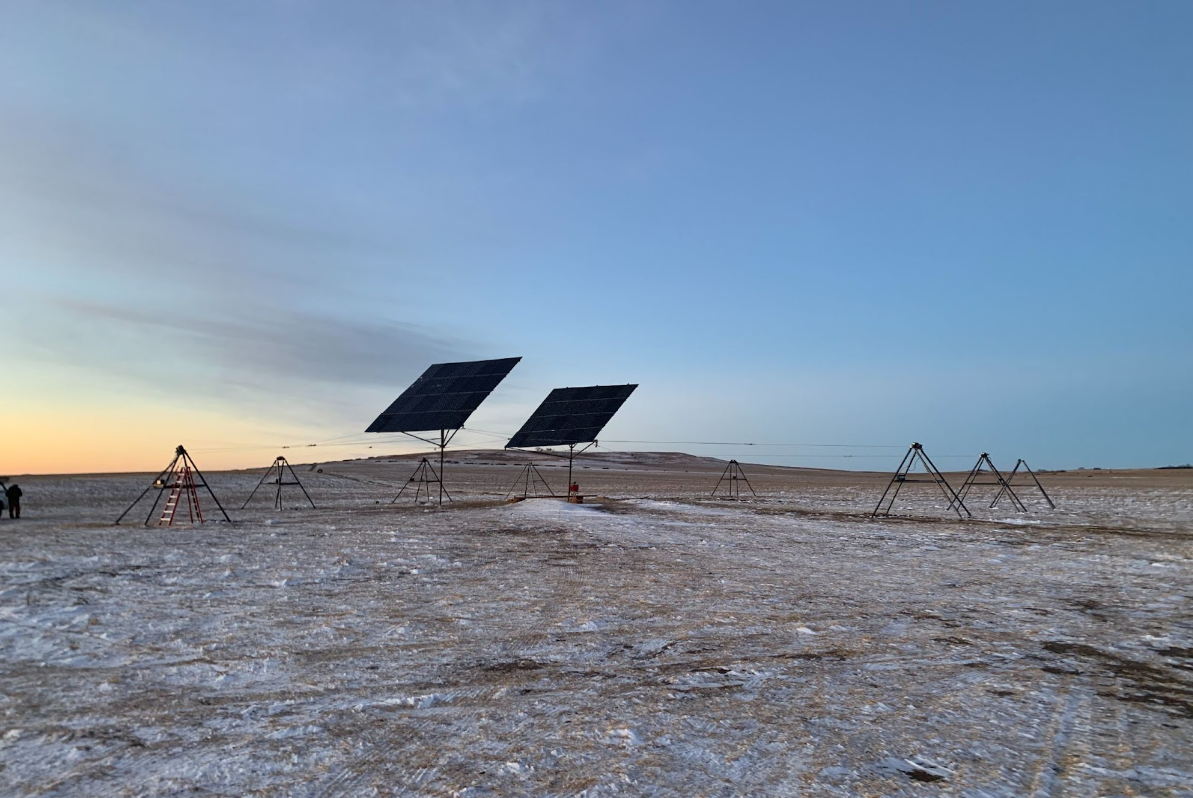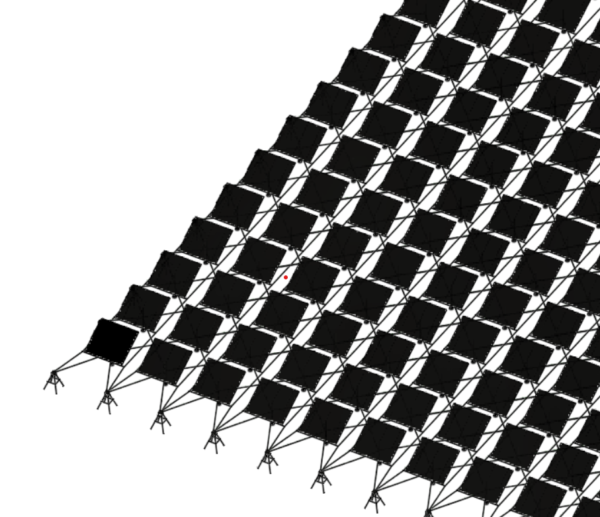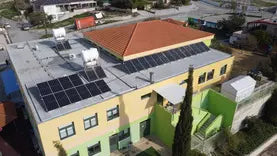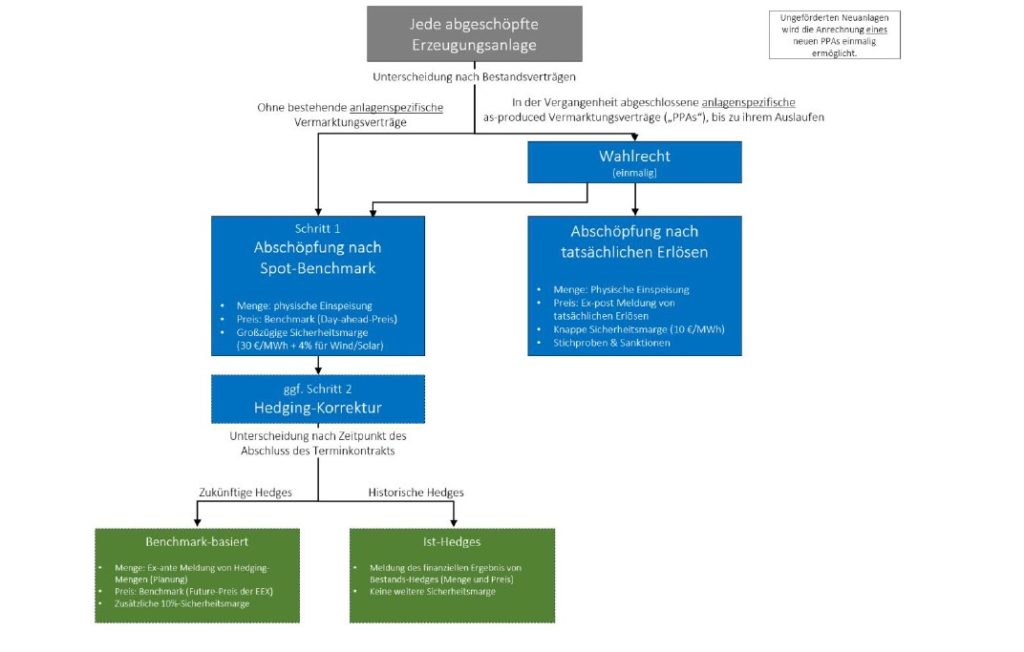https://pv-magazine-usa.com/2022/11/09/agrivoltaic-solar-tracker-uses-cables-instead-of-buried-steel/
Agrivoltaic solar tracker uses cables instead of buried steel

Pole pilot at Standing Rock Reservation, North Dakota.
Image: Rute Foundation
Rute Foundation Systems, founded in Oregon in 2015, specializes in modular foundations for renewable energy. But in 2021 it focused its sites above ground, designing the patent-pending Suntracker for high-clearance solar installations like agrivoltaics.
Agrivoltaics, the practice of co-locating solar energy production with agriculture, has been gaining traction around the world as prime solar land becomes more scarce and the benefits of pairing solar with farmland become more obvious. For example, researchers at the University of Arizona have found that solar arrays improve crop yield in dry environments by providing shade. Furthermore, grazing sheep among solar panels has been used to manage grasses at the site, performing an agricultural form of O&M. An agrivoltaic array is typically raised above 8 feet to allow agriculture to continue underneath, and that’s where the Suntracker design comes in.
“Despite being beneficial for the landowner, agrivoltaics has historically been a difficult sell for the developer,” said Doug Krause, resident, Rute Foundation Systems. “Now that we have a system with attractive economics to all stakeholders, we expect dual-use utility scale agrivoltaics to grow exponentially”

Image: Rute Foundation
The Suntracker system is suspended by cables, rather than mounted on steel driven into the ground, providing what the company says is the lowest levelized cost of energy (LCOE) for high-clearance solar. Rute reports that by using cables rather than steel foundations, steel use is reduced by as much as 30%. Another advantage of the cable system is that the land does not have to be disturbed in order to install the system, which is a benefit in the agricultural industry. It also enables the land to be returned to its original condition in the event that the solar installation were to be removed.
Rute compares its Suntracker installation to a cable suspension bridge. The cables not only hold the system in place, just as in a suspension bridge, but they also use the cables to rotate the panels to track the sun,. The tracking systems provides up to 28% more electricity than fixed panels, the company reports. With its lower cost and the additional revenue from tracking, Rute says its Suntracker is the first agrivoltaic system to achieve a levelized LCOE competitive with conventional solar.
Rute received a grant from the U.S. Department of Energy and Business Oregon to build a pilot, and the company is now building its proving ground at the manufacturing innovation center in Scappoose, Oregon.
This content is protected by copyright and may not be reused. If you want to cooperate with us and would like to reuse some of our content, please contact: editors@pv-magazine.com.




